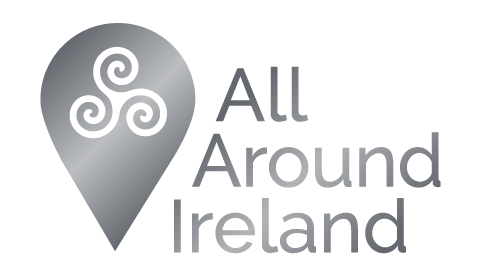There’s no other national holiday as widely celebrated as St Patrick’s Day or Paddy’s Day (but never St Patty’s Day in Ireland!). Rivers, buildings, food, drinks and people around the world will be turning green to mark the occasion, while the pubs prepare to pour Guinness galore for the revellers. It’s easy to get caught up in the parades, costumes, the crazy partying and the general celebration of everything Irish, but have you ever wondered what’s really behind it all?

Buildings in Dublin lit in green for for the festivities.

Before the madness starts, here are some things about St Patrick and St Patrick’s Day celebrations in Ireland, that you may not have known:
St Patrick was not Irish or originally called Patrick
St Patrick was actually born in the west of Britain, probably in present-day Wales – the village of Banwen in Wales claims to be his birthplace. He was kidnapped by Irish raiders at the age of 16 and brought to Ireland. After six years of captivity he escaped and returned home to his family. However a few years later he had a vision and felt compelled to return to Ireland as a Christian missionary. The name Patricius or Patrick came from the Latin for “father figure”, which he used after becoming a priest.

Children wait patiently for the parade to start in Dublin
Ireland was pretty much last to join the party
Traditionally in Ireland, St Patrick’s Day was mainly a religious celebration. It’s a holy day of obligation and generally one of quiet observance. Families would usually attend mass and then return home for dinner. There were no public events or parades.
It was really the Irish abroad, in an effort to celebrate their origins, that began the celebrations that slowly grew into what we see today. The earliest recorded St Patrick’s Day parade was in 1762 in New York. In comparison, the first parade held in Ireland was in Waterford in 1903. In the same year St Patrick’s Day became an official public holiday in Ireland. Parades were taking place throughout the country from this time but the first state-sponsored parade wasn’t held till 1931, in Dublin.
As youngsters, we’d pin on some shamrocks or a green rosette before being taken in for the parade, which mainly consisted of a lot of marching bands and some pretty average floats. Like most Irish kids, myself and my brothers gave up sweets for Lent and St Patrick’s Day was our day off. If we were really lucky we’d get a green milkshake from McDonalds and that was about the height of the excitement! It wasn’t until the mid 1990s that St Patrick’s Day was really promoted, gradually growing from a one day event to the five day festival it currently is.

The parade passes St Patrick’s Cathedral in Dublin
Green wasn’t always our colour.
As I write this post I’m trying to remember where I stashed my green T-shirt after last years celebrations but did you know that Ireland’s national colour was originally blue. A lighter shade of blue was also worn by the Order of St Patrick.
So how have we all ended up wearing green? There doesn’t seem to be a definitive reason behind the change but it certainly has nothing to do with leprechauns and stories that they would go around pinching people who weren’t wearing green. Sorry! It is more likely due to political reasons. The colour blue was associated with Ireland’s colonial history and during rebellion against the British, green appeared to become the chosen colour of the nationalists. This later came to be represented on the Irish flag with the green symbolising Catholics, the orange symbolising Protestants and the white in the centre signifying peace between the two.

Getting a good vantage point is important!
Bars used to close for the day
Pretty hard to believe, I know. Irish politician James O’Mara was the man responsible for making St Patrick’s Day an official holiday in 1903. He was also later responsible for introducing legislation that forced all bars to close on March 17th. This was mainly due to fears of excessive drinking. It wasn’t until the 1960s that the law was repealed. I’m sure that was a day of celebration at the Guinness brewery!

World Record Celebrations
Fun trivia time! Did you know that the village of Dripsey in Cork is recorded in the Guinness Book of World Records as having the shortest St Patrick’s Day Parade in the world? It measured just 23.4 metres, from the door of one pub in the village to the other! It was held for nine years from 1999 to 2007, ending then because one of the pubs closed.
View footage from the RTÉ archives here.







No Comments